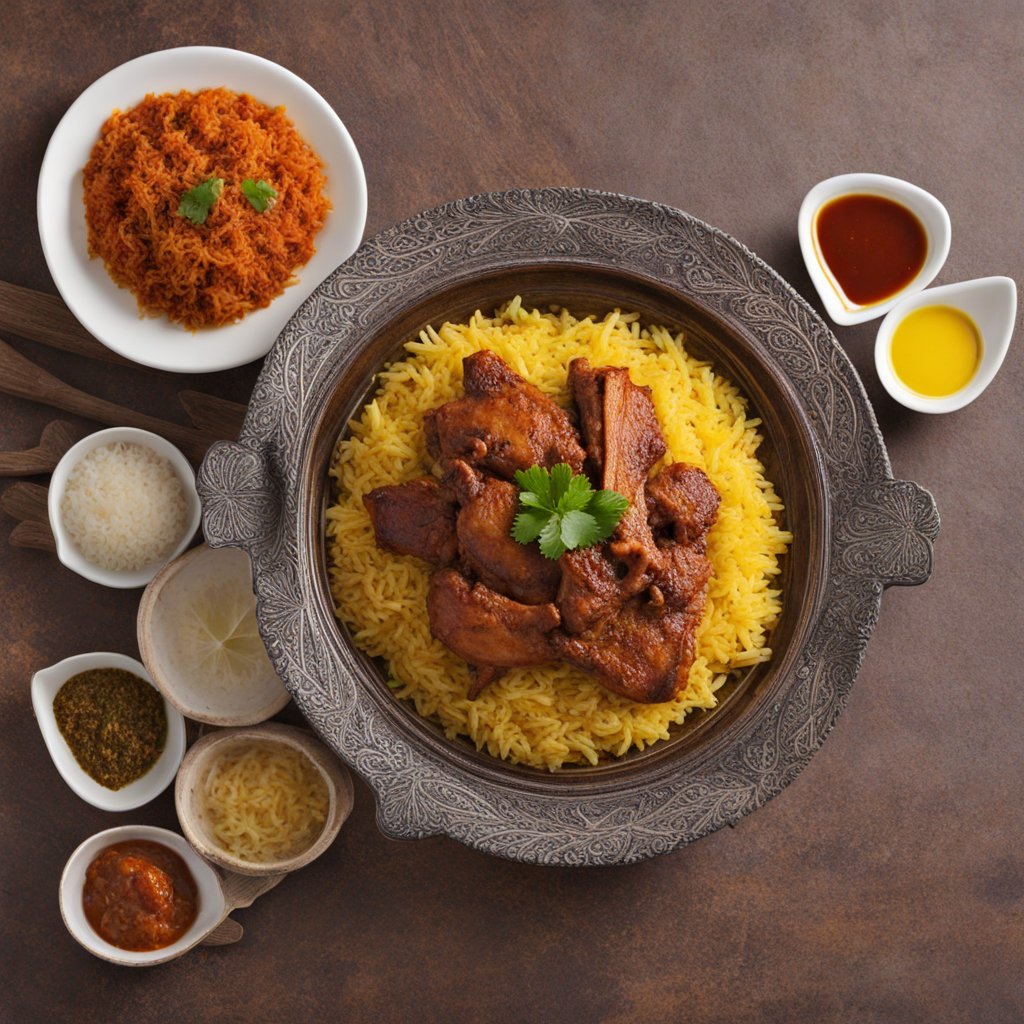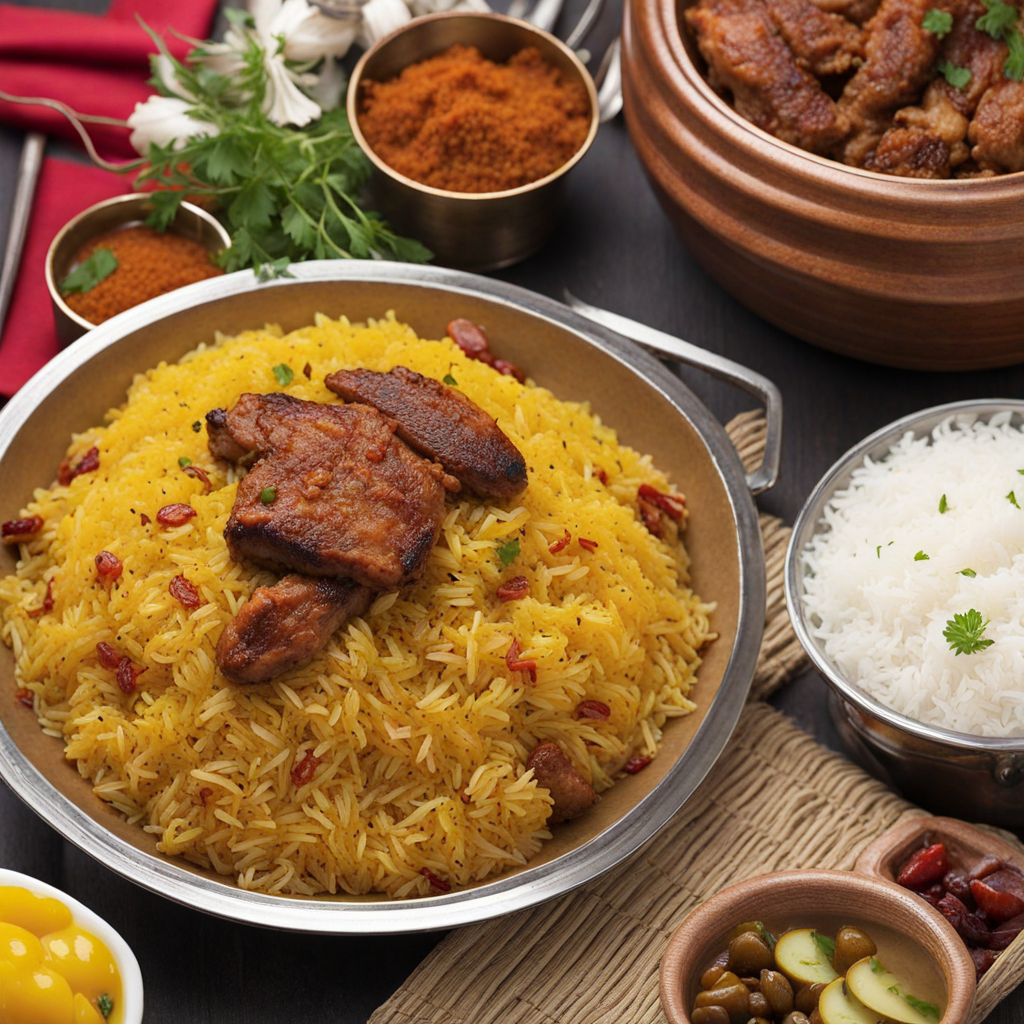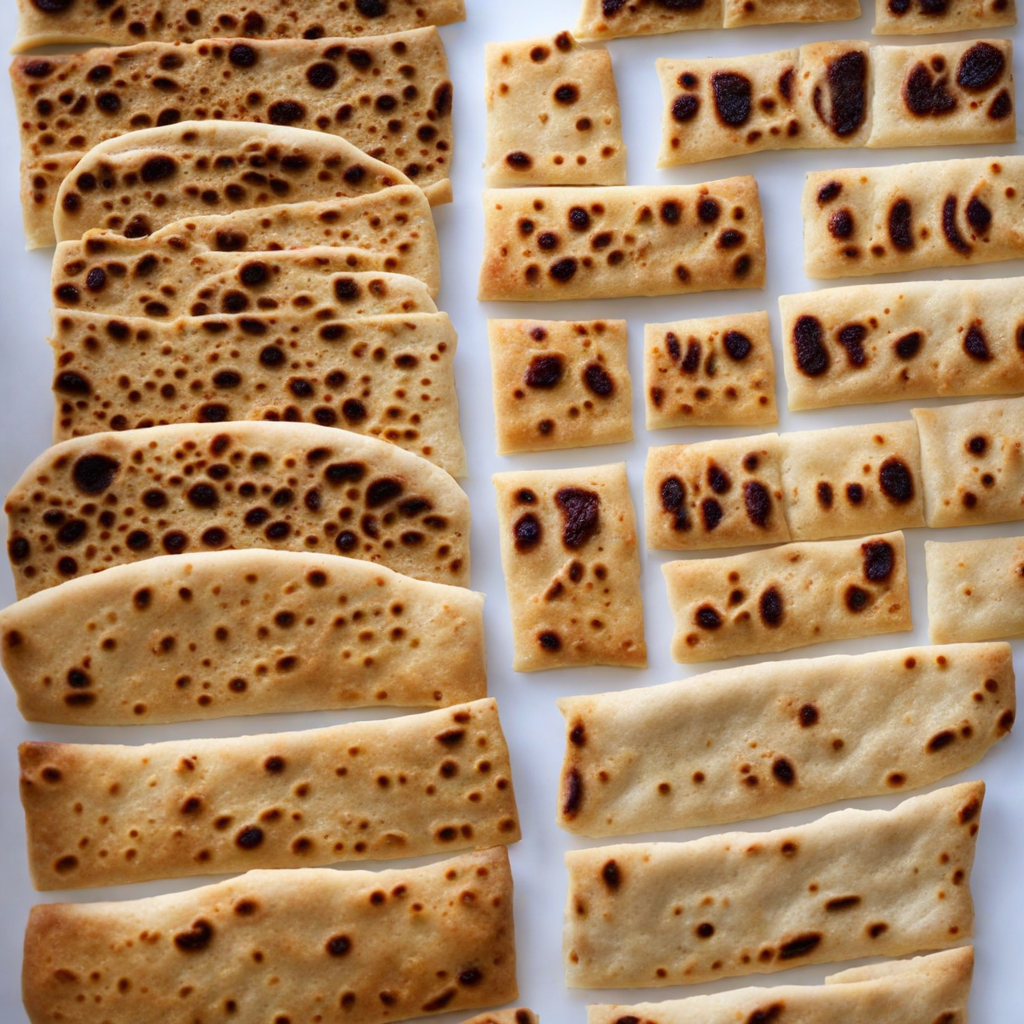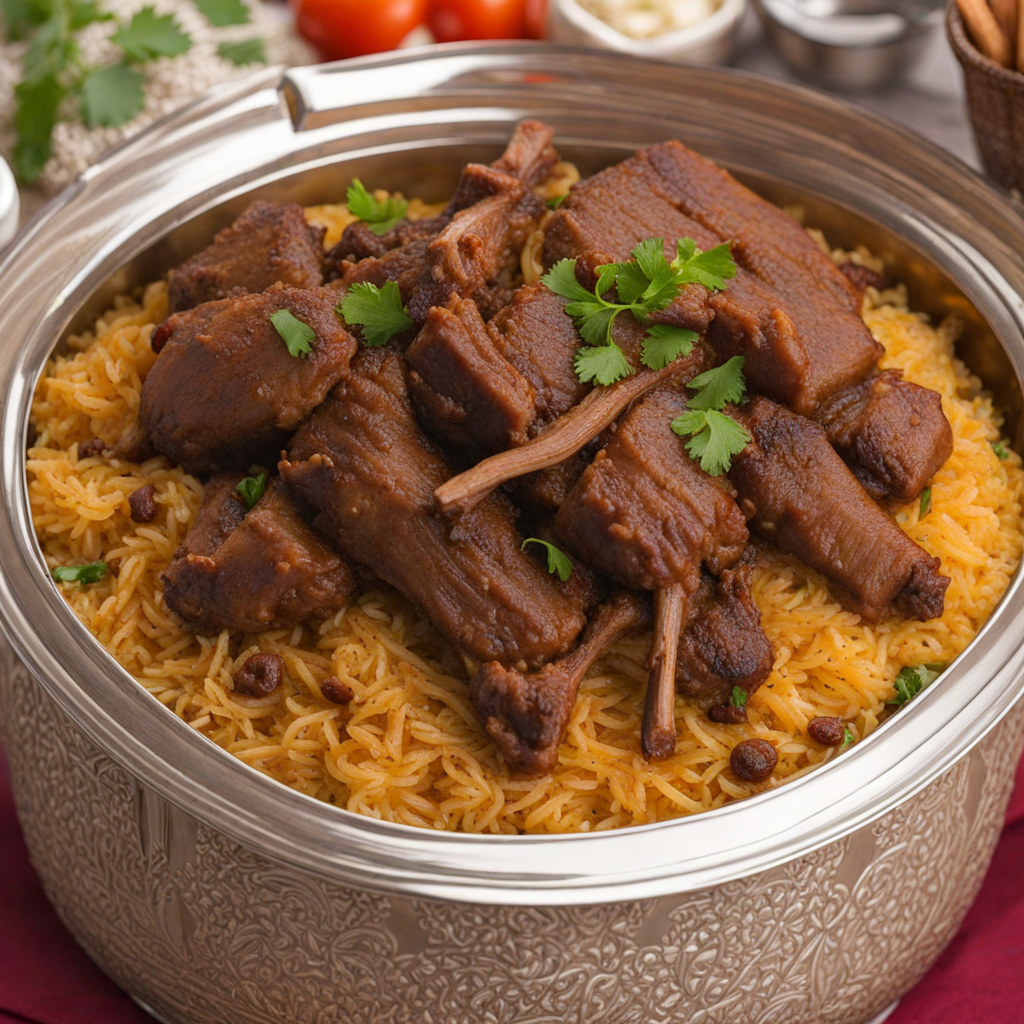Machbous
Machbous is a traditional Qatari dish that embodies the rich culinary heritage of the Gulf region. At its core, Machbous features a fragrant mix of basmati rice, tender meat—often chicken or lamb—and a blend of warm spices like saffron, cardamom, and black lime. The dish is often enhanced with sautéed onions, tomatoes, and garlic, giving it a depth of flavor that is both comforting and exotic. The rice is cooked to perfection, soaking up the aromatic spices and juices from the meat, creating a harmonious balance that tantalizes the taste buds. What sets Machbous apart is its unique method of preparation, which involves layering the ingredients and allowing them to simmer together. This slow-cooking process ensures that every grain of rice is infused with the savory essence of the meat and spices. Traditionally, it is served with a side of tangy tomato sauce or a refreshing salad, allowing diners to customize their experience with every bite. The result is a dish that is not only visually appealing but also invites you to indulge in its complex flavors. Enjoying Machbous is more than just a meal; it's a cultural experience. Often served during gatherings and celebrations, this dish brings people together around the table, inviting conversation and connection. Each region in Qatar may have its own variation of Machbous, adding personal touches that reflect local tastes and traditions. Whether you're sharing it with family or savoring it alone, Machbous offers a delightful journey into Qatari cuisine that is sure to leave a lasting impression.
How It Became This Dish
The History of Majboos: Qatar's Culinary Treasure Majboos, a beloved dish in Qatar and the broader Gulf region, is a fragrant and flavorful rice dish, often served with meat, vegetables, and an array of spices. Its rich history reflects the intricate tapestry of Qatar’s cultural influences, historical trade routes, and the evolution of culinary practices over centuries. This exploration of Majboos will take us through its origins, cultural significance, and its development over time, painting a vivid picture of this iconic dish. #### Origins of Majboos Majboos, also spelled as 'Majbous' or 'Majbos,' is believed to have its roots in the traditional Bedouin cuisine of the Arabian Peninsula, where nomadic tribes relied on simple yet nourishing meals to sustain them through their travels across harsh desert landscapes. The basic components of Majboos—rice, meat, and spices—were easily transportable and could be prepared in a single pot over an open fire, making it an ideal dish for the nomadic lifestyle. The dish has a direct lineage to the Persian pilaf, and its name is derived from the Arabic word 'جَبَسَ' (jabas), meaning 'to pressure' or 'to cook under pressure.' This concept aligns with how the dish is traditionally prepared; the rice is often cooked in a broth made from meat and spices, allowing the flavors to meld beautifully. The introduction of Majboos to Qatar can be traced back to the importation of rice and spices through trading routes, particularly during the rise of maritime trade in the 18th and 19th centuries. The flourishing pearl diving industry and trade brought not only wealth but also a range of culinary influences from India, Persia, and East Africa, which have contributed to the evolution of Majboos. #### Cultural Significance In Qatar, Majboos is more than just a meal; it is a symbol of hospitality and tradition. The preparation and serving of Majboos often mark significant cultural events such as weddings, festivals, and family gatherings. The dish is typically served on large platters, where diners gather around to share in the feast, emphasizing the communal aspect of dining—a key element of Qatari hospitality. Majboos is often accompanied by an array of side dishes, including salads, yogurt, and various pickles, which enhance the dining experience. The communal nature of sharing Majboos fosters connections among family and friends, embodying the values of generosity and togetherness that are fundamental to Qatari culture. The dish's significance is further underscored by its representation in national events. During celebrations such as National Day or Eid, Majboos is a staple, symbolizing national pride and cultural identity. It serves as a reminder of the rich heritage of the Qatari people and their ability to preserve tradition while embracing modern influences. #### Development Over Time As Qatar has modernized, so too has the preparation and presentation of Majboos. Traditional methods of cooking have been complemented by contemporary techniques, allowing chefs to experiment while maintaining the essence of this cherished dish. While the classic version of Majboos features lamb or chicken, variations now include seafood and vegetarian options, catering to diverse palates and dietary preferences. In recent years, the global popularity of Middle Eastern cuisine has brought Majboos into the international spotlight. As Qatari food has gained recognition outside the region, chefs have sought to adapt the dish for a broader audience, incorporating local ingredients from their respective regions while respecting the traditional flavors and cooking methods. In addition to restaurants, Majboos has found its way into culinary festivals and competitions, showcasing Qatar’s rich culinary heritage to visitors from around the world. This has led to a revival of interest in traditional cooking methods and the importance of preserving heritage recipes among younger generations. Furthermore, the influence of social media has played a significant role in the promotion of Majboos. Food bloggers and influencers share visually appealing images and recipes online, encouraging home cooks to try their hand at this delicious dish. This digital age has allowed for the exchange of recipes and cooking techniques, bridging the gap between traditional and modern culinary practices. #### Ingredients and Preparation The heart of Majboos lies in its ingredients. The traditional recipe typically includes basmati rice, which is known for its long grains and aromatic qualities. The meat, often lamb or chicken, is marinated with a blend of spices such as cumin, coriander, turmeric, and cardamom. Onions, garlic, and tomatoes form the base of the dish, providing depth and richness. The preparation of Majboos is a labor of love, often involving multiple stages. First, the meat is cooked until tender, imparting its flavors into the broth. The rice is then added, absorbing the savory liquid and spices, which infuse it with a delightful aroma. The final step involves steaming the dish, allowing the rice to achieve perfect fluffiness. Variations of Majboos may include additional ingredients such as raisins, nuts, or saffron, which add complexity and a touch of luxury to the dish. The balance of flavors, from savory to sweet, is what makes Majboos a true culinary masterpiece. #### Conclusion Majboos is far more than just a dish; it is a celebration of Qatar’s heritage, hospitality, and culinary artistry. From its humble beginnings among Bedouin tribes to its prominent place on the tables of modern Qatari households, Majboos tells a story of resilience, adaptation, and cultural pride. As Qatar continues to grow and evolve, so too will its culinary traditions, ensuring that dishes like Majboos remain at the heart of its identity for generations to come. Whether enjoyed at a festive gathering or a simple family meal, Majboos embodies the spirit of Qatar—rich, vibrant, and full of flavor.
You may like
Discover local flavors from Qatar







